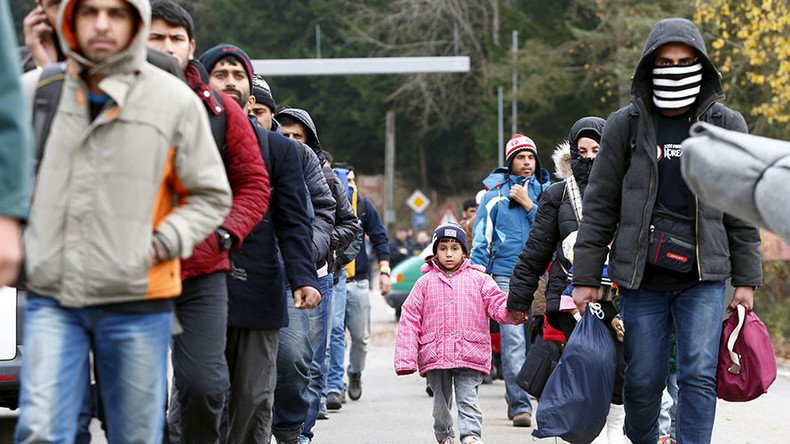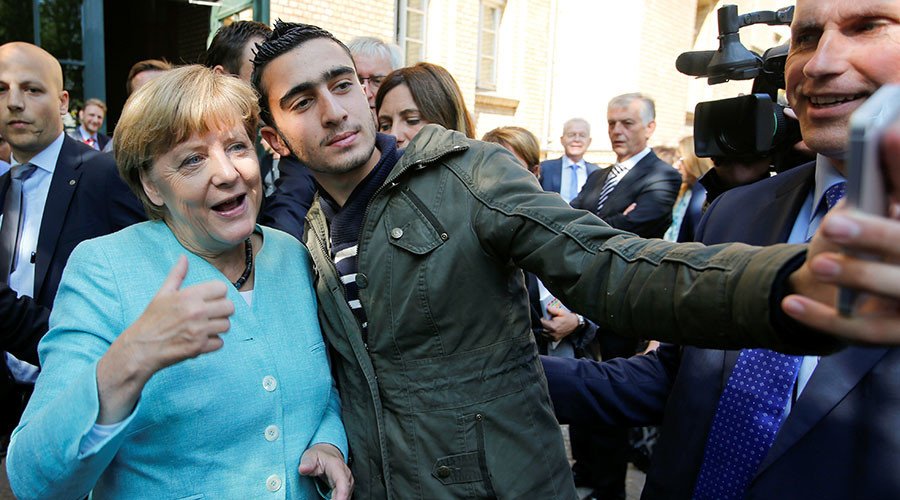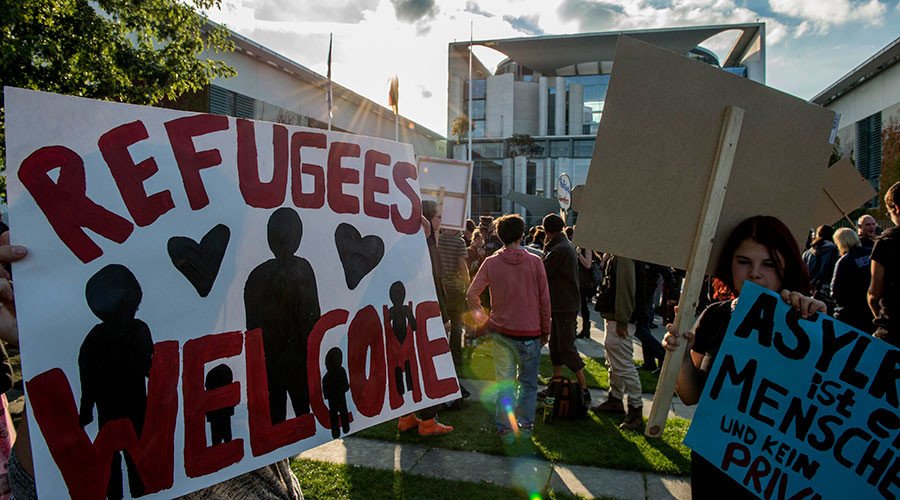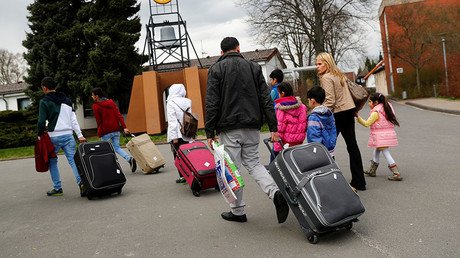Merkel let in refugees ‘to avoid border clashes that would look bad on TV,’ claims insider book

A new book by a political journalist says that German leader Angela Merkel was on the verge of closing the borders instead of welcoming refugees, but was persuaded not to out of fear that images of violence would make her government unpopular.
'Driven by Events: Merkel’s Refugee Policy' by Robin Alexander, a journalist with Die Welt, was published this week. It claims that as late as September 2015, the peak of the migrant influx into Europe, the German chancellor had still not formulated a policy.
According to excerpts from the book, quoted in the Sunday Times, the situation came to a head when officials warned that as many as 40,000 migrants moving from the Balkans could enter Bavaria in a single weekend.
In secret – the media was informed but told to avoid publishing the news – thousands of police were deployed at the Austrian border, ready to physically protect it from the newcomers. A special order had been prepared by the police, denying entry to those who had no visas.
But Chancellor Merkel was hesitant, and according to Alexander, used her Interior Minister, Thomas de Maziere, to ask the police the questions, “What happens if 500 refugees with children in their arms run toward the border guards? Can we live with the images that will come out of this?”
“For historical reasons, the chancellor feared images of armed German police confronting civilians on our borders,” Alexander writes.
Despite objections from the police commissioner that the force would act within the scope of the law, Merkel, also worried about the legal implications of a border ban, spiked the original document, and forced a redraft, saying that "third-country nationals with an asylum claim are to be permitted entry even without legally binding documents."
This meant that the police would be powerless to stop almost anyone wanting to enter the country, as long as they said they were a refugee.

In the end, the influx produced a positive media reaction, not least because of the publicity of the drowning of three-year-old Alan Kurdi earlier that month, and “Refugees are welcome!” banners appeared in most German urban centers.

Merkel rode the wave, visiting the newcomers and taking photos with them, and reiterating the “We can do it!” slogan, first used a fortnight earlier, when the Chancellor assured the electorate that Germany was capable of absorbing the influx.
“The selfies were not planned, the border opening was not planned. But then came a wave of incredible rapture in Germany — and she went with the public mood as ever. Merkel governs by the polls,” writes Alexander.
The border stayed open for another six months, though they had to be shut eventually, but the figures for 2015 showed that Germany had welcomed 1.1 million migrants – more than the rest of Europe put together.
“In the end, Merkel refused to assume responsibility, even as everything was in place to close the borders, so they remained open — without an explicit decision,” writes Alexander, who says in his book that Merkel’s generosity helped to create the “anxiety about migration” that contributed to the rise of right-wing Alternative for Germany, Brexit, and eventually, the election of Donald Trump.













